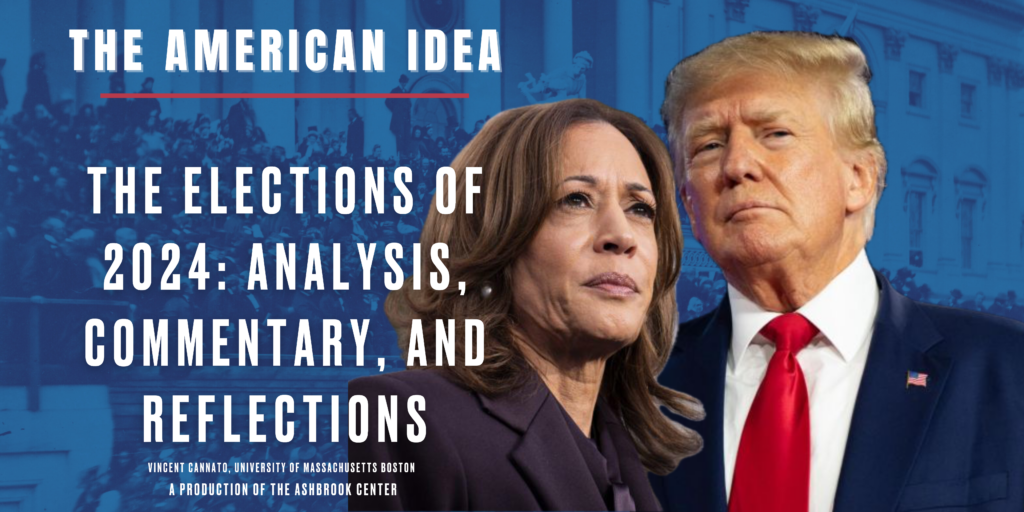Elections of 2024 - Analysis, Commentary, and Reflections
November 13, 2024

Listen and subscribe to the podcast
Join The American Idea’s Listener Email list – get news about upcoming episodes and a chance to offer questions for them, too!
In the 2024 election, Donald Trump’s strength and the unpopularity of Joe Biden and Kamala Harris, along with other factors such as economic struggles and concerns about national security, led to a significant shift in the Republican and Democratic parties. Trump successfully appealed to working-class voters, particularly non-college-educated whites and Latinos, while the Democratic Party faced challenges due to its focus on cultural issues rather than economic concerns. The future of both parties remains uncertain, with Republicans attempting to retain their working-class base while Democrats grapple with appealing to a more diverse and divided electorate.
These elections have strengthened the Republican Party, with the establishment of a majority in the US Senate and a narrow majority in the US House. Battleground states saw close races in the Senate, with a split vote reflecting the country’s division. Republicans maintained control of the House despite Democratic expectations due to Republican strength in blue states like California and New York. Speaker Mike Johnson could face challenges in uniting the House with its narrow majority and different conservative factions.
Governor’s races remained largely unchanged, with 27 Republicans and 23 Democrats elected, suggesting continued Republican strength at the state level. Despite nationalization of elections, candidate quality and local issues still play a role, as seen in North Carolina’s gubernatorial race. Emerging Democratic figures to watch include Governors Gavin Newsom, Gretchen Whitmer, and Josh Shapiro. Organized labor unions are experiencing divisions, with some unions becoming more neutral in political support, and in some cases the rank & file supporting Trump while leadership still supports Democrats – if now more passively than in the past.
The media is expected to continue its adversarial relationship with the Trump administration, viewing itself as a check on power. The credibility of legacy media, particularly on television and newspapers, continues to crater, as Americans are increasingly unwilling to trust clearly left-leaning newsrooms. Foreign policy and foreign affairs should be closely watched, as the world faces regional conflicts and uncertainties, particularly in the Middle East and with China. Trump’s many assertions about tariffs and trade agreements also warrant consideration as he prepares to, once again, become president.

